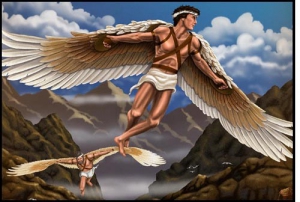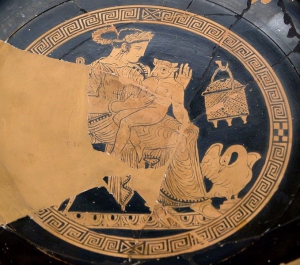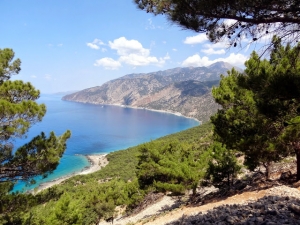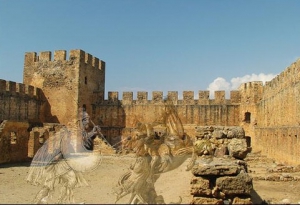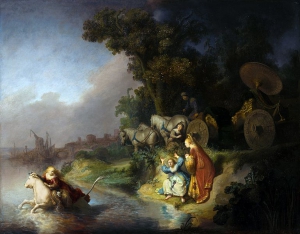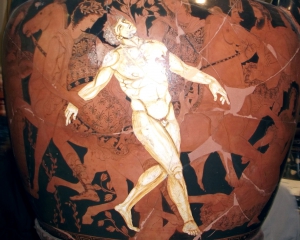Cronus sired several children by Rhea: Hestia, Demeter, Hera, Hades, and Poseidon, but swallowed them all as soon as they were born, since he had learned that he was destined to be overcome by his own son as he had overthrown his own father. But when Zeus was about to be born, Rhea sought Gaia to devise a plan to save him, so that Cronus would get his retribution for his acts against Uranus and his own children. This, Rhea gave birth to Zeus in Crete, handing Cronus a rock wrapped in swaddling clothes, which he promptly swallowed.
Daedalus was a resourceful and very talented Athenian artist and inventor. Many people believe that he was a real person that was later mythified. The name Daedalus derives from the greek verb "daedalo" which means "work with skill”. He is told to have discovered several well-known tools such as saw, ax, plumb line, drill, masts and figure heads of ships and pottery wheel.
One of the most famous legends of Cretan mythology is that of the Minotaur and his fight with Theseus in the dark maze. This myth is presented in this article. According to the legend, the king of Knossos, Minos, once asked Poseidon to send him a sign to indicate that he was the only one that should be the king of Knossos (against his brother Radamanthys).
Crete in antiquity and mythology was known with various names that were given, either for the sake of the grounds, of its people, or for another cause. Aeria, Chthonia, Dolichos, Telchinia, Idaean, Makaria, Kouritis, Kaftor and Crete are few.
600 Greeks fought against 8000 Turks during the Battle of Frangokastello (17 May 1828). They resisted for more than one week but at the end 335 of them, with Dalianis, were killed. Dead Turks were 800. According to the legend, the bodies of the warriors remained unburried, till a strong wind moved sand from Orthi Ammos and covered the bodies.
According to Greek mythology, Europa was the beautiful daughter of King of Phoenicia, Agenor and sister of Cadmus (founder of Thebes). Once, while playing with her friends on the beach, Zeus saw her and fell in love with her.
Talos was the mythical guardian of Crete. He was an anthropomorphic giant automoton with copper body. He is regarded as the first robot in ancient mythology. Talos was the vigilant guardian of Crete, circling the island's shores three times daily, in order to protect it from enemies.
Idomeneus was a king of Crete, who along with his friend and relative Meriones, took part in the Trojan War, leading more than 80 ships with Cretan warriors from Knossos, Gortys, Lyktos, Miletus, Rhytium, Lykastos and Phaestus. After 10 years he returned to the island and reigned again..












